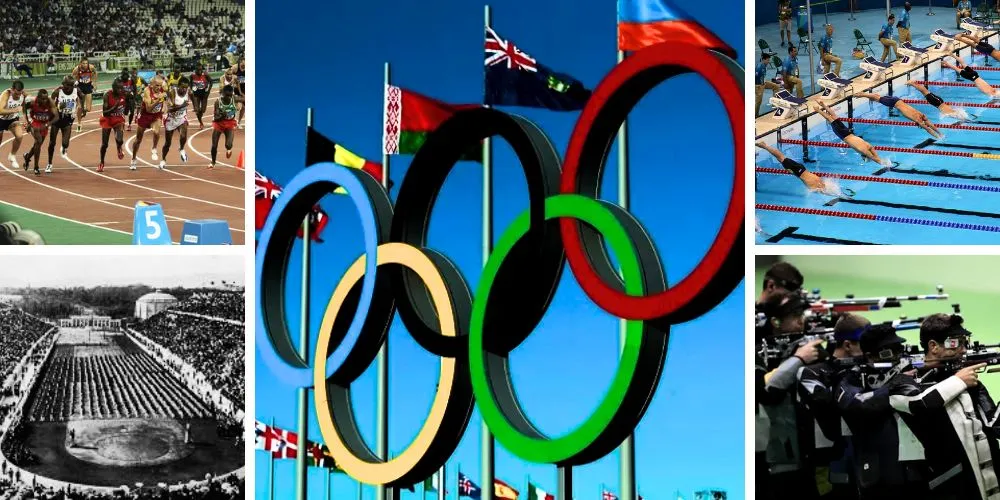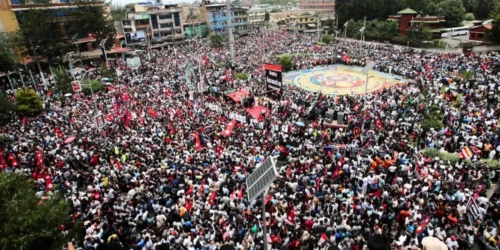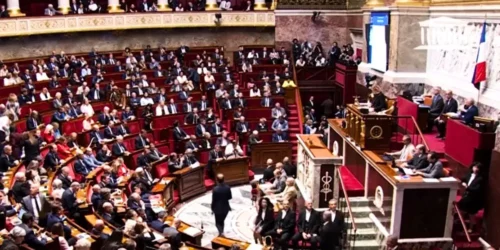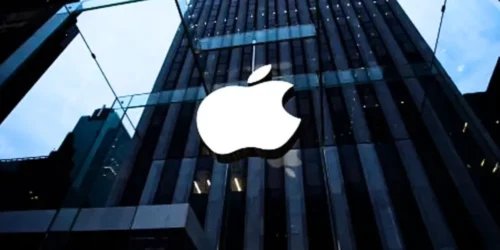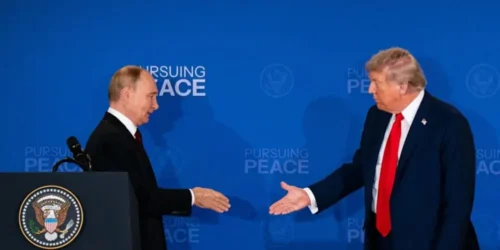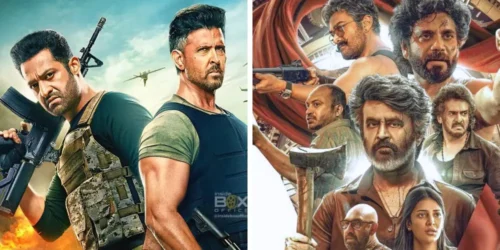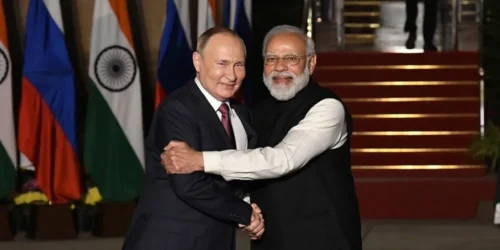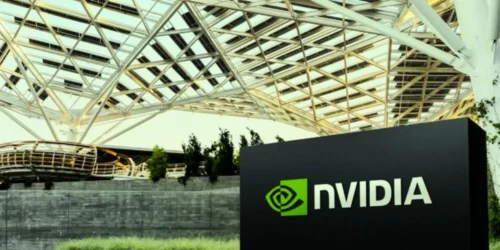Once every two years, a flame is kindled on the ancient grounds of Olympia, Greece. It is a simple, symbolic act, a ritual meant to connect our chaotic modern world to an idealized past of noble, amateur competition. That flame then begins a long journey, carried by a relay of runners across continents and cultures, a traveling beacon of hope and unity. It is the opening scene in a global drama that is, by turns, inspiring, infuriating, breathtaking, and absurd.
It is a phenomenon that defies easy definition. It is, at once, the planet’s most prestigious sporting competition, a multi-billion-dollar commercial enterprise, a potent tool of geopolitics, and a deeply flawed, often corrupt, international institution. It is a two-week festival that produces moments of pure, transcendent human achievement—the record-shattering sprint, the gravity-defying gymnastic routine—while also leaving a trail of debt, displacement, and disillusionment in its wake.
How did a revival of an ancient Greek athletic festival, conceived by a romantic French aristocrat, morph into this glorious, troubled, five-ringed leviathan? And what does our continued devotion to this paradoxical event tell us about our enduring hunger for global spectacle and our complicated relationship with the ideals of peace, unity, and fair play?
This is a case study of the Olympic paradox. We will not simply list medal winners or memorable moments. We will dissect the very DNA of the Games, exploring the powerful, often conflicting, forces that animate them. We will journey from the idealistic salons of 19th-century Paris to the high-stakes, backroom bidding wars of the 21st century. We will use the contrasting stories of two iconic host cities—London 2012, the celebrated “feel-good” Games, and Rio 2016, the cautionary tale of ambition versus reality—to understand the immense promise and the profound peril of hosting the world’s greatest party.
This is the story of an impossible dream, a dream of a world united in sport, and the messy, complicated, and often heartbreaking reality of trying to make that dream come true on the world’s biggest stage.
The Anatomy of a Modern Myth – Deconstructing the Olympic Ideal
To understand the modern Olympics, you must first understand the powerful myth that lies at its heart. One man crafted that myth: Baron Pierre de Coubertin, a French educator and historian who, in the late 19th century, became obsessed with the idea of reviving the ancient Greek Olympic Games.
Coubertin was a product of his time. He was an aristocrat who believed in the power of sport to build character, to foster international understanding, and to create a new, modern form of chivalry. His vision was not just about sport; it was a deeply philosophical and political project. He believed the Games could be a force for peace in a world that was hurtling towards the industrial-scale slaughter of World War I.
From this vision, he constructed the core tenets of “Olympism,” a quasi-religious philosophy that still animates the movement today.
- The Amateur Ideal: In Coubertin’s original vision, the Olympic athlete was a “gentleman amateur,” someone who competed for the love of the sport, not for money. Professionalism was seen as a corrupting influence. This ideal, while now largely abandoned, shaped the Games for most of the 20th century.
- The Unity of Body, Mind, and Spirit: The Games were meant to be more than a physical contest. They were a celebration of human excellence in all its forms, blending sport with art and culture.
- Peace and Internationalism: The ultimate goal was to bring the youth of the world together, to have them compete on the “fields of friendly strife,” fostering mutual respect and understanding that would transcend national rivalries. The five interlocking rings, representing the five inhabited continents, were the symbol of this global unity.
This was a beautiful, romantic, and powerful myth. And it was almost immediately complicated by the messy realities of the real world. From the very beginning, the Games became entangled with the two forces Coubertin had hoped they would transcend: nationalism and politics.
The Hijacking of the Ideal: Nationalism and Politics on the Podium
While the athletes were meant to be individuals competing in a spirit of global brotherhood, they were, from the start, organized into national teams. The medal table, which Coubertin himself disdained, quickly became a proxy scoreboard for national prestige. A gold medal was not just a personal triumph; it was a victory for the nation, a validation of its strength and vitality.
The Games inevitably became a stage for political drama. The most infamous example is the 1936 Berlin Games. Adolf Hitler and the Nazi regime shamelessly used the Games as a massive propaganda spectacle, designed to showcase the supposed supremacy of the “Aryan race.” The athletic brilliance of Jesse Owens, the African American track and field star who won four gold medals, was a stunning rebuke to Hitler’s racist ideology. Still, the episode proved that the Games could not be insulated from the political turmoil of the world.
This trend continued throughout the Cold War. The United States and the Soviet Union treated the Olympics as an ideological battleground, a proxy war fought in stadiums and swimming pools. The medal count was seen as a direct measure of the superiority of capitalism versus communism. The era was marred by a series of politically motivated boycotts, with the U.S. leading a boycott of the 1980 Moscow Games and the Soviet Union retaliating with a boycott of the 1984 Los Angeles Games.
The romantic dream of a purely apolitical sporting festival had collided with the hard reality of a world divided.
The End of Amateurism: The Arrival of the Professionals and the Money
The other core tenet of Coubertin’s vision, the amateur ideal, also crumbled under the pressures of the modern world. The Soviet bloc countries made a mockery of the rule by creating “state amateurs”—athletes who were officially soldiers or students but who, in reality, trained full-time at the expense of the state.
The real death knell for amateurism, however, came from the arrival of television and corporate sponsorship. Under the savvy, if controversial, leadership of International Olympic Committee (IOC) President Juan Antonio Samaranch in the 1980s, the Olympics transformed itself into a commercial juggernaut.
Samaranch understood that the five-ringed logo was one of the most powerful and recognizable brands on Earth. He created “The Olympic Partner” (TOP) programme. This sponsorship model sold exclusive global marketing rights to a small number of multinational corporations (like Coca-Cola, Visa, and Panasonic) for hundreds of millions of dollars. He aggressively negotiated television broadcast rights, turning them into a multi-billion-dollar revenue stream.
To maximize the appeal of the television product, the IOC needed the world’s best athletes, not just well-heeled gentlemen amateurs. The rules were gradually relaxed, culminating in the 1992 Barcelona Games with the arrival of the U.S. “Dream Team,” a basketball squad composed of NBA superstars like Michael Jordan, Magic Johnson, and Larry Bird. The era of the professional Olympian had arrived.
This commercialization saved the Olympic movement from financial irrelevance. Still, it also completed its transformation from Coubertin’s romantic vision into something far more complex: a global entertainment product, a powerful political stage, and a massive business enterprise.
The Golden Ticket – The High-Stakes Game of Hosting the Olympics
The ultimate prize in the Olympic ecosystem is the right to host the Games. For a city, being chosen as an Olympic host is like winning a golden ticket. It is a chance to step onto the world stage, to reinvent one’s international image, and to catalyze decades of urban development into a few short years. It is also a colossal gamble, a project of such scale and complexity that it has the power to either make or break a city.
The bidding process itself is a multi-year, multi-million-dollar political campaign. Cities assemble teams of politicians, business leaders, and sports personalities to woo the 100-or-so voting members of the International Olympic Committee (IOC). This process has, for decades, been notoriously opaque and plagued by allegations of corruption, culminating in the Salt Lake City bribery scandal of the late 1990s, where several IOC members were expelled for accepting lavish gifts in exchange for their votes.
If a city wins, it enters into a contract with the IOC that is heavily weighted in the IOC’s favor. The host city assumes all the financial risk. It is responsible for building a vast array of new facilities: an Olympic stadium, an aquatics center, a velodrome, an Olympic Village to house the athletes, and a massive media center for the world’s press. It must also undertake huge infrastructure projects, upgrading airports, roads, and public transit systems. The IOC, meanwhile, contributes a portion of its television and sponsorship revenue but bears none of the financial risk if things go wrong.
The promise made to the citizens of the host city is always the same: that this massive investment will produce a lasting positive “legacy.” This legacy is supposed to include:
- Economic Growth: A short-term boost from construction and tourism.
- Urban Regeneration: The transformation of neglected industrial areas into new parks and neighborhoods.
- New Infrastructure: World-class sporting facilities and improved public transportation for future generations.
- A “Feel-Good” Factor: A surge in civic pride, volunteerism, and participation in sport.
As our two case studies will show, this promised legacy can be a beautiful reality or a cruel mirage.
The “Feel-Good” Games – A Case Study on the Success of London 2012
When London was awarded the 2012 Games, beating out the heavily favored Paris, many were skeptical. London was already a global megacity. Did it need the Olympics? Would the notoriously grumpy British public embrace the project?
Yet, by almost every measure, the London 2012 Games were a resounding success. They are often held up as the model of how to host a modern Olympics, a case study in meticulous planning, creative vision, and genuine public engagement.
The Vision: Regeneration and Inspiration
The core of London’s bid was not about building monuments to itself. It was about urban regeneration. The plan was to use the Games as a catalyst to transform a vast, post-industrial wasteland in East London—one of the poorest and most neglected parts of the city—into a new, vibrant urban center. The Olympic Park would be built on this contaminated brownfield site, and after the Games, the stadiums and the Olympic Village would be converted into public facilities and new housing.
The second pillar of the vision, articulated by the bid’s charismatic leader, former Olympian Sebastian Coe, was to “inspire a generation.” The goal was not just to host a successful two-week event, but to use the Games to create a lasting legacy of increased sports participation and volunteerism across the UK.
The Execution: Meticulous Planning and a Touch of British Wit
The execution of the Games was a masterclass in project management and public relations.
- On Time and Budget (Mostly): While the final cost of around £9 billion was significantly higher than the initial bid, the project was delivered on time, a rare feat for a modern Olympics. The construction was managed by a dedicated Olympic Delivery Authority that was largely praised for its efficiency.
- The Power of Volunteers: The organizers recruited a massive army of 70,000 volunteers, the “Games Makers,” who became the cheerful, helpful public face of the event. Their enthusiasm was infectious and played a huge role in creating the welcoming, celebratory atmosphere.
- A Spectacular Opening Ceremony: Danny Boyle’s quirky, brilliant Opening Ceremony was a turning point. Instead of a staid, jingoistic display, it was a creative, self-deprecating, and utterly charming celebration of British history and culture, from the Industrial Revolution to the National Health Service to Mr. Bean. It perfectly captured the national mood and won over a skeptical public.
The Legacy: A Qualified Success
Did London achieve its promised legacy? The answer is a qualified yes.
- The Physical Transformation: The regeneration of East London has been a stunning success. The Olympic Park is now a beautiful public space. The former athletes’ village is now a thriving new neighborhood. The area has seen a massive influx of investment and new jobs.
- The Intangible Legacy: The “feel-good” factor was undeniable. The Games created a rare moment of national unity and pride. However, the promise to “inspire a generation” has been harder to quantify. While there was a short-term spike in sports participation, studies have shown that it was not sustained in the long term.
London 2012 was not perfect. It was expensive, and it involved the displacement of some existing residents and businesses. But it stands as a powerful example of what can be achieved when the Games are harnessed to a clear, long-term urban and social vision. It showed that it was possible to host a Games that felt both spectacular and human, both global and deeply local.
The Broken Dream – A Case Study on the Tragedy of Rio 2016
Just four years after the triumph of London, the Olympic movement crashed back down to earth with the chaotic, controversial, and ultimately heartbreaking Games in Rio de Janeiro. The Rio 2016 Games were meant to be a celebration of a new, confident Brazil, the first-ever Olympics held in South America. Instead, they became a cautionary tale of overreach, political turmoil, and the devastating human cost of a dream that a city could not afford.
The Vision: A City Transformed
Rio’s bid, like London’s, was built on a promise of urban transformation. The Games were to be the catalyst for modernizing the “Marvelous City,” tackling its chronic problems of crime, inequality, and inadequate infrastructure. The plan involved building new sporting venues across four different zones of the city, linked by new bus rapid transit lines and a subway extension. The Games were meant to leave a legacy of improved mobility and a cleaner Guanabara Bay, the famously polluted site of the sailing events.
The Unraveling: A Perfect Storm of Crises
The problem was that between the heady days of winning the bid in 2009 and the opening of the Games in 2016, Brazil was hit by a perfect storm of crises.
- Economic Collapse: The commodities boom that had fueled Brazil’s growth came to a crashing halt. The country plunged into its worst recession in a century. The government, both national and local, was broke.
- Political Implosion: The massive “Operation Car Wash” corruption scandal engulfed the entire political class, leading to the impeachment of President Dilma Rousseff just months before the Games began. The country was in a state of political paralysis and deep social unrest.
- The Zika Virus: A public health emergency was declared over the outbreak of the Zika virus, creating fear among athletes and tourists.
Against this backdrop of chaos, the preparations for the Games became a frantic, desperate scramble. Corners were cut, promises were broken, and the budget spiraled out of control.
The Legacy of Failure
The Rio Games went ahead, and they produced their share of memorable sporting moments. But the aftermath has been a story of decay and disillusionment.
- White Elephant Venues: Many of the expensive new venues have fallen into disrepair. The iconic Maracanã stadium, site of the opening and closing ceremonies, has been vandalized. The Olympic Park is largely deserted. The venues, built with public money, have become decaying symbols of broken promises.
- Displacement and Inequality: To build the Olympic Park, the city forcibly evicted thousands of residents from a favela called Vila Autódromo. The new infrastructure projects disproportionately benefited the city’s wealthy neighborhoods, while the poor were left with little more than higher bus fares. Instead of reducing inequality, the Games arguably exacerbated it.
- The Environmental Failure: The promise to clean up Guanabara Bay was a complete failure. The sailing events took place in waters that were dangerously polluted with raw sewage.
- The Financial Hangover: The Games left the city and state of Rio de Janeiro with a massive debt hangover, forcing deep cuts to essential public services like healthcare and security in the years that followed.
The story of Rio 2016 is a tragic one. It is the story of a city with a beautiful dream that was shattered by a brutal collision with economic and political reality. It serves as a stark, powerful warning about the immense risks of hosting the Games, particularly for cities in the developing world. It raises a fundamental question: Is the Olympic model, in its current form, a sustainable or even ethical proposition for a city facing profound social and economic challenges?
The Future of the Five Rings – Reform, Risk, and Relevance
The stark contrast between the success of London and the tragedy of Rio, combined with the ongoing reputational damage from corruption scandals, has forced the IOC into a period of soul-searching. The old model of encouraging cities to engage in a spectacular and expensive bidding war, with the winner taking on all the risk, was becoming unsustainable. Fewer and fewer democratic cities were willing to bid for the Games, terrified of the potential costs and the risk of a public backlash. The Olympic movement was facing a crisis of relevance.
In response, the IOC, under its current president, Thomas Bach, has launched a series of reforms known as “Agenda 2020” and the “New Norm.” The goal is to make hosting the Games cheaper, more flexible, and more sustainable. Key reforms include:
- Encouraging the Use of Existing Venues: Host cities are now strongly encouraged to use existing or temporary venues, rather than building expensive new “white elephants.”
- A More Collaborative Bidding Process: The IOC has moved away from the old, competitive bidding process to a more collaborative “dialogue” with potential host cities, working with them to develop a plan that fits their long-term needs.
- A Focus on Sustainability and Human Rights: The IOC has incorporated stronger sustainability and human rights requirements into the host city contract.
The recent selection of host cities reflects this new approach. Paris 2024 plans to use 95% existing or temporary venues. Los Angeles 2028 will use 100% existing or temporary venues, requiring no new permanent construction at all. Brisbane 2032 was selected through the new dialogue process.
The New Challenges: Geopolitics and the Question of Values
Even as the IOC tries to reform its economic model, it faces a new and profound set of geopolitical challenges. The world is entering a new era of great power competition, particularly between the United States and its democratic allies on one side and authoritarian states like China and Russia on the other.
The Olympics are, once again, becoming a major arena for this conflict.
- The Beijing 2022 Winter Games: These Games were held under the shadow of the Chinese government’s brutal crackdown on human rights in Xinjiang, Hong Kong, and Tibet. The U.S. and several of its allies staged a “diplomatic boycott” of the Games. The event highlighted the profound moral dilemma of awarding the Olympics to authoritarian regimes, forcing a debate about whether the Olympic ideal of “political neutrality” is simply a cover for turning a blind eye to human rights abuses.
- The Russian Doping Scandal and the War in Ukraine: The discovery of a massive, state-sponsored doping program in Russia led to the country being formally banned from the Olympics. However, its athletes have been allowed to compete as “neutral” individuals. The full-scale invasion of Ukraine has further complicated this, leading to calls for a complete ban on all Russian and Belarusian athletes.
These crises force the IOC to confront its most difficult question: What are the fundamental values of the Olympic movement? Is it a politically neutral sporting event that should go to any country willing to host it? Or is it a movement that represents a specific set of liberal, democratic values, and should it only partner with nations that share those values? There are no easy answers, and the IOC’s attempts to walk a neutral line are becoming increasingly untenable in a polarized world.
Conclusion: The Enduring, Flawed Dream
The Olympic Games are a paradox. They are a monument to a beautiful, naive, 19th-century ideal, and a massive, modern, multi-billion-dollar entertainment business. They are a powerful force for global unity and a stage for bitter national rivalries. They can inspire a city to reinvent itself for the better, or they can leave it with a legacy of debt and decay. They produce moments of the most sublime human achievement and are governed by an institution that is often deeply and frustratingly flawed.
The story of the Games is the story of this constant, unresolved tension between the ideal and the reality. The success of London 2012 shows that, under the right conditions, with the right vision and planning, it is possible to bridge that gap, to host a Games that is both spectacular and sustainable, both global and human. The tragedy of Rio 2016 shows what happens when that gap becomes a chasm, when the ambition of the dream far outstrips the capacity of the reality.
As we look to the future, the Olympic movement stands at a crossroads. It must continue its path of reform to ensure that hosting the Games is a prize worth winning, not a trap to be feared. And it must navigate the treacherous new landscape of global politics, making difficult choices about its own identity and values.
And yet, for all its flaws, we keep watching—billions of us. We watch because the core of the Olympic dream, the dream that animated Baron de Coubertin over a century ago, still speaks to something deep within us. We watch for the moment when a young athlete, after a lifetime of sacrifice, achieves a moment of perfection. We watch for the moment of sportsmanship, when two rivals from hostile nations embrace after a hard-fought contest. We watch because, for two brief weeks, the Games offer us a glimpse of a different kind of world—a world where our common humanity feels more powerful than our national divisions.
It is a flawed, expensive, and often maddening dream. But it is a dream we seem unwilling, and perhaps unable, to give up on. The flame will be lit again. The athletes will gather. And the world, once more, will stop to watch.

